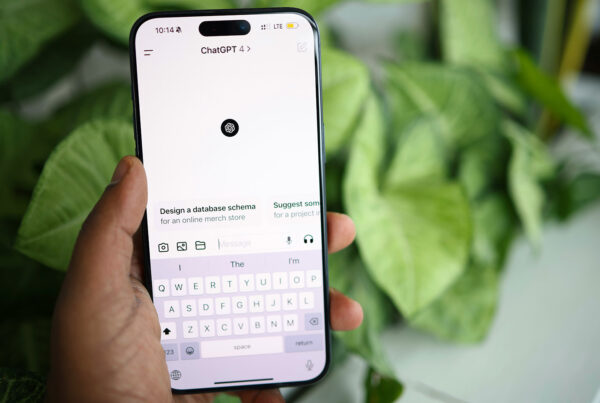When you close your eyes and think of London, what do you see? A bustling metropolis of busy professionals, ethnically diverse communities and high-speed tube travel. Immersed within this is a rich artistic culture that spans decades of revolutionary creative thinking and innovative designs. With the vast array of arts organisations and famous museums across the whole of London, artists and designers surely cannot help but be inspired and influenced.

The London art scene is a vibrant hub of creative individuals across design, fashion and digital landscapes. Many creative designers embrace technological advances inspiring one another to follow in the footsteps of other London innovators who continue to influence artists worldwide. London is a city with an intrinsic web of arts culture and although you may not even realise it, your day is filled with images that have been considered, developed and reimagined to shape the landscape of our city.
Reactive Graphics are always inspired by other designers. We are creative team of London web designers with multi-discipled artistic backgrounds and interests. Based in London and just moments from Putney Bridge tube we are lucky to have daily reminders of some of the design classics that are recognisable to London.
London Underground
An iconic design that some of us take for granted is the London underground type-face and roundel by Edward Johnston.
Johnston was the first font in the humanist sans-serif typeface, taking inspiration from traditional Roman lettering with a simple and professional edge. This timeless branding is something that web and graphic designers in London are always trying to emulate.
The Roundel
The second part of the London Underground branding campaign is the widely used and extremely recognisable Roundel. Seen at every station across London the originally known ‘bar and circle’ first appeared on Underground station platforms in 1908. The make up was a solid red enamel disc and horizontal blue bar. First commissioned to stand out from commercial advertising the roundels were timber framed to add extra prominence. In the late 1920s Johnston designs several different versions of the roundel symbol in order to create a unified identity for the brand.

Recently, Reactive Graphics were commissioned by Transport for London (TFL) to design a newsletter/eshot that could be used across all platforms to provide news updates to TFL users. Working within a design template that encapsulates decades of minor adjustments but is almost identical to the original design was a great project for us to work with. Drawing inspiration from new designs whilst paying homage to the originals.
Harry Beck: The London Underground map
The design of the London Underground map that we utilise across print and digital platforms of the London Underground map is an evolution of a design conceived by Harry Beck way back in 1913. The somewhat radical schematic transit map of London’s public transit systems were cleverly drawn up by Beck under the premise that passengers riding the underground were not too bothered about geographical accuracy, but were more interested in how to get from one station to another.
Sounds about right to me.

The map was refused on several occasions due to its geographical inaccuracy (despite design brilliance!) as stations were plotted like an electricity circuit diagram where distances are not as important as order.
Other London classics
Looking out of your London office window you are likely to see many familiar things. Perhaps a few redesigned ‘pillar-box’ red route-master buses (sadly only two of the originals are still in circulation) or perhaps a Giles Gilbert Scott designed telephone box. Then there’s the digital advertisements amongst a scattering of maybe Banksy’s and pavement artworks. But it is not only those designs and artists that are everyday influences in the London web design scene.
![]()
London’s artistic history also involves stars like, English Romanticist landscape painter J.M.W. Turner who’s eclectic works made in the 1800’s hold much precedence in today’s society. With bold use of complementary colours, multi-textured strokes and an incredible depth shown in light and shadow through his paintings, you can see why many arts pro’s say his work was ahead of its time. Depth is something that we aspire to create through parallax and responsive web design and was also a challenge for print based artists back in the day.

Frank Kelly, exhibitions curator at the national gallery describes Turner’s ability to create depth using light saying ‘It’s there from the beginning, the early watercolors, where the shafts of sunlight are breaking through that cloudy sky…all the way through the great, late visionary works where you’re really staring at the sun.’ Whether you love his work or you hate it, it is amazing that one artist from down town London – as gallantly played by Timothy Spall in Mike Leigh’s 2014 film ‘Mr Turner’– has inspired across two centuries of artists both print and digital.

Then there’s William Morris, English textile designer, poet and socialist activist (amongst many things) who lived in the big city for most of his life. He is now most commonly known for his textile designs and intricate patterns for tapestry and wallpaper, inspiring many artists, illustrators and designers across the world.He was a London designer who emphasised organic dyes such as walnut shells and roots for various shades of brown in his work offering a very natural feel and texture to the designs he produced. Again, quite ahead of his time in terms of techniques and design innovation, his prints are replicated across many of today’s creative industries including textiles, fashion and graphics.
Morris’ Snakehead print inspired by indian textiles. A tapestry in the 1800’s and an iPhone case in 2015.
He was also a pioneer of the arts and crafts movement which straddled the end of the 19th Century and the beginning of the 20th Century – and amongst his biggest fans was typographic artist Rudolf Koch. (Super fan!) The teachings of Morris were evident in Koch’s use of hand-lettering and type-face design, which saw him to become the (German) daddy of modern Calligraphy. Which brings us full-circle to his contemporary, the (english) daddy of modern calligraphy, Edward Johnston (as mentioned above) with their awesomely influential fatherlike typographical wizardry.
There are many influential artists whose work is intrinsic to the London design scene of the 21st Century. Here at Reactive Graphics we embrace all types of design in an effort to broaden the spectrum of what the London web design scene can be. We work with clients from very corporate and professional worlds to artists and creative companies who require an open minded and flexible approach to web design. We take pride in our city and we believe that London IS the home of inspiration. Web design is an art, and London is home to a rich and diverse culture that is the perfect workplace for us digital designers.
If you would like more information regarding the services that we provide please visit our services pages. Or if you would like us to design your new website then do get in touch. Our on site cafe serves lovely coffee, so feel free to drop by.
#wearereactive


